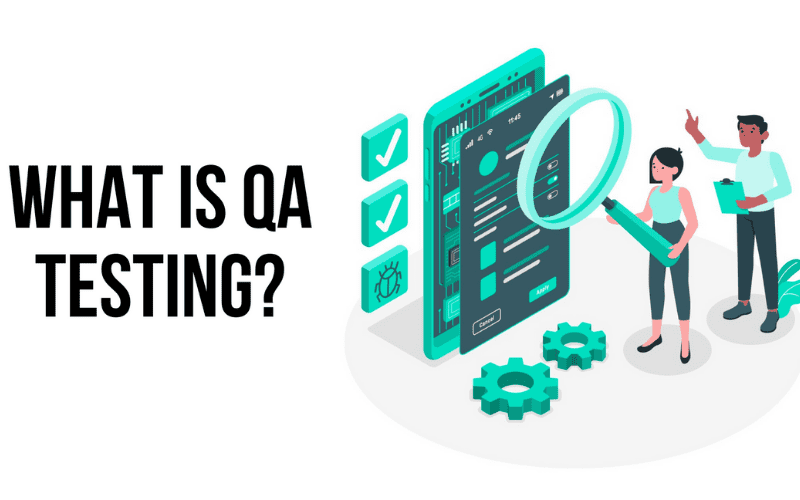In the fast-paced world of technology, software drives the heart of almost every business and innovation. Ensuring that this software performs as intended is a critical task—and that’s where Quality Assurance (QA) testers come in. QA testers play a pivotal role in the software development lifecycle by rigorously examining applications for bugs, usability issues, and functionality errors before they reach the end user.
However, the question arises: Is QA Tester a Hard Job? This is a common query among those considering a career in quality assurance or transitioning into the field. To answer it, we must dive into the intricacies of the QA testing profession, examining the skills required, the challenges faced, and the rewards offered.

What is a QA Tester?
Quality Assurance (QA) testers are the guardians of software quality. They ensure that applications meet established standards and function as intended. But what exactly does the role entail, and why is it so vital in today’s software-driven world?
The Role of a QA Tester
At its core, QA testing involves systematically examining software to detect bugs, glitches, or inconsistencies that could impact its performance or user experience. QA testers collaborate closely with developers, product managers, and other stakeholders to ensure the final product aligns with the project’s objectives. Some of their key responsibilities include:
- Test Planning: Creating detailed test plans and scenarios based on software specifications.
- Executing Tests: Performing both manual and automated tests to verify functionality.
- Documenting Issues: Reporting bugs, glitches, or areas of concern with precise and actionable feedback.
- Regression Testing: Re-testing software after fixes to ensure stability.
- Ensuring Usability: Verifying that the software is user-friendly and accessible to the target audience.
QA testers don’t just focus on whether the software works—they also ensure it delivers a seamless and intuitive user experience. Their work often involves identifying potential issues that developers may overlook due to their proximity to the code.
Types of QA Testing
There are several types of QA testing, each tailored to evaluate specific aspects of software. Some of the most common methods include:
- Manual Testing: Hands-on testing where QA professionals simulate user interactions to find issues.
- Automated Testing: Using tools like Selenium or Appium to execute pre-written test scripts automatically.
- Functional Testing: Verifying that all features of the software work as expected.
- Performance Testing: Assessing the software’s speed, responsiveness, and stability under varying conditions.
- Security Testing: Ensuring the software is secure from vulnerabilities and threats.
- Exploratory Testing: A creative, unscripted approach to uncover unexpected issues.
- Regression Testing: Testing previously functioning software after updates or bug fixes to ensure no new issues were introduced.
A Day in the Life of a QA Tester
The daily routine of a QA tester is both structured and dynamic. They may start the day by reviewing test plans, conducting test cases, and documenting their findings. Collaboration is also a significant aspect of their role, as they participate in team meetings, discuss issues with developers, and update project managers on progress. The job requires a balance of technical expertise, attention to detail, and communication skills.

Skills Required for QA Testers
Being a QA tester demands more than a sharp eye for detail. It’s a multi-faceted role that requires a combination of technical expertise, analytical thinking, and interpersonal skills. These competencies are essential for ensuring software meets the highest quality standards and delivers a positive user experience.
Key Skills Needed for QA Testing
To succeed as a QA tester, you need to master a diverse skill set. Here are the core skills that define an effective QA professional:
- Analytical and Critical Thinking
QA testers must think critically to identify hidden bugs and anticipate potential issues. Analyzing the software’s behavior under various conditions helps them pinpoint areas for improvement. - Technical Knowledge
A solid understanding of software development processes and testing methodologies is critical. Familiarity with programming languages like Java, Python, or C# is particularly valuable for testers involved in automation. - Attention to Detail
Even the smallest oversight can result in significant issues for end users. QA testers must meticulously examine every aspect of the software, from functionality to design. - Problem-Solving Skills
When testers uncover a bug, they must determine the root cause and communicate their findings clearly. This often requires creative and logical problem-solving approaches. - Communication Skills
QA testers work in cross-functional teams and need to convey technical issues in a way that is understandable to non-technical stakeholders. Clear documentation and verbal communication are vital. - Adaptability
Technology evolves rapidly, and so do testing tools and methodologies. A successful QA tester stays up to date with industry trends and embraces continuous learning.
Do QA Testers Need to Code?
One common misconception is that all QA testers must be proficient in programming. While coding isn’t always a requirement, it can significantly enhance a tester’s effectiveness, especially in automation. Here’s a breakdown of the coding requirements for different QA roles:
- Manual Testers: Coding knowledge is not mandatory, but understanding basic concepts of software and databases is helpful.
- Automation Testers: Coding skills are essential for writing and maintaining test scripts. Proficiency in tools like Selenium, TestComplete, or Appium often requires knowledge of programming languages.
- Hybrid Roles: Many QA roles now blend manual and automated testing, where basic coding skills can be a huge asset.
For example, an automation tester working with Selenium might need to write scripts in Java or Python to test the application’s functionality across various browsers. On the other hand, a manual tester focusing on usability might rely on intuition and user empathy rather than technical expertise.
Real-Life Example: The Journey of a QA Tester
Consider Sarah, a manual QA tester at a mid-sized software company. With a background in business, she didn’t have a technical degree but relied on her analytical thinking and detail-oriented nature to excel. Over time, she transitioned into automation testing by taking online courses in Python and learning tools like Selenium. Today, Sarah leads her team’s automation strategy, showcasing how skill development can redefine a QA tester’s career path.
The skills required for QA testing might seem daunting, but they’re attainable with the right mindset and resources.

Challenges QA Testers Face
Quality Assurance testing is not without its difficulties. The role demands a meticulous approach to problem-solving, the ability to adapt to shifting project requirements, and resilience under pressure. Understanding these challenges can help aspiring QA testers prepare for the realities of the job.
Common Difficulties in QA Testing
While QA testing is rewarding, it can also be demanding due to the following challenges:
- Tight Deadlines and Time Pressure
QA testers often work under strict deadlines, especially when products are close to launch. Balancing thorough testing with timely delivery can be stressful, particularly in agile environments where development cycles are shorter. - Evolving Technologies
The rapid pace of technological advancement means testers must stay up-to-date with new tools, platforms, and frameworks. For instance, the rise of AI-driven testing tools has revolutionized QA, requiring testers to quickly adapt and learn. - Repetitiveness of Tasks
Testing the same features repeatedly, especially during regression testing, can feel monotonous. QA testers need strategies to maintain focus and ensure they don’t overlook critical issues. - Complex Communication
Testers act as the bridge between developers, project managers, and clients. Miscommunication can lead to misunderstood requirements or unresolved issues, requiring excellent interpersonal and negotiation skills. - Handling Unpredictable Bugs
Not all bugs are straightforward. Some issues only arise under specific conditions, making them difficult to reproduce and resolve. Testers must exhibit patience and persistence in these situations.
Stress in QA Testing
The pressures of the job can lead to stress, especially when high-profile projects are at stake. Here are a few scenarios that contribute to stress in QA testing:
- Stakeholder Expectations: Testers often face pressure to minimize bugs while ensuring timely delivery, a balance that’s not always easy to achieve.
- Last-Minute Changes: Sudden updates to project requirements can disrupt testing schedules, requiring rapid adjustments.
- Accountability for Bugs: Although finding bugs is their primary role, testers may feel responsible if issues slip through the cracks and are discovered post-launch.
However, these stressors can be mitigated by adopting effective time management techniques, clear communication practices, and using automation tools to handle repetitive tasks.
How QA Testers Overcome Challenges
Many QA testers successfully navigate these challenges by:
- Embracing Automation: Tools like Selenium, JIRA, and Appium streamline repetitive tasks and free up time for more critical analysis.
- Continuous Learning: Staying ahead of industry trends through certifications, online courses, and QA communities helps testers remain competitive and confident.
- Team Collaboration: Regular communication with developers and stakeholders ensures alignment on goals and expectations.
Case Study: Overcoming QA Challenges in an Agile Environment
At a fintech company, a QA team faced the challenge of testing a mobile app under tight deadlines. With limited resources, they automated regression tests using Selenium and implemented daily stand-ups to enhance collaboration with developers. This approach allowed them to meet their deadline without compromising the app’s quality, demonstrating how strategic planning can overcome typical QA challenges.
While these hurdles can make QA testing seem like a hard job, they also highlight the critical thinking, problem-solving, and resilience that define the profession.